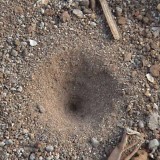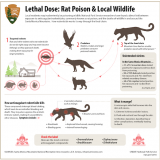
One of my favorite sights this summer has been the view out our front window. There, quick winged little goldfinches come and go all day long. The bird feeder they are visiting is festooned all around with little bobbing sunflowers. Sometimes I mistake a finch for a flower, and think a flower has sprung into flight.
The sunflower is an tenacious volunteer. When I noticed it sprouting in the deep shade of our pomegranate tree, I didn’t think it had much hope for survival–and yet I’ve learned to respect the choices of volunteer plants, as Fukuoko-san advised.
Sure enough, the sunflower knew what it was doing. It concentrated all its resources into an epic twelve foot growth spurt, straight up, like a bamboo stalk. Only once it crested the top of the pomegranate and found the sun did it begin to spread its arms, and I swear that when it did, I could hear a sigh of relief.
Now this monster sunflower is sprawling all over the pomegranate, using it and the bird feeder pole for support. There are hundreds of little yellow flowers on it, from the highest reaches to to the deepest shade on the ground.
The heads are going to seed, and so have become a food source for the birds, who I often see bobbing on them, nibbling as they wait their turn for the feeder. Squirrels nosh on them too. And the bright yellow flowers look great against our ripe, ruby red pomegranates, which, when they split open, are also a food source for the birds.
It’s hard to describe, and pretty much impossible to photograph, this cheery, eye-popping chaos, but we enjoy it, and the cats are entranced.
While I’ve sometimes wondered if it is right to keep a feeder in our yard, I feel good about it as of now, because we are providing other sources of forage as well. We let our plants go to seed. We don’t spray, so there are plenty of bugs to eat. (Why so many spiders this year???) My thoughts are always turning toward planting strategies which provide year round food sources for our flying friends.
If you do keep a feeder, remember to clean it at least once a month. There are some bad bird diseases going around. Scrub it with soap and water and–according to birdish authorities like the Audubon Society–soak it afterward in a 10% bleach solution. I don’t do bleach, so I spray mine down with rubbing alcohol, which I keep in a spray bottle to sterilize my pruning shears. It’s just handy. If I didn’t have that, I’d use vinegar.
Clean out your birdbaths, too. You don’t have to bleach them, but change the water regularly and don’t let them get all gunky. And if you keep hummingbird feeders, you probably know those need to be cleaned out with hot water every few days, so mold doesn’t form in the sugar.



I love this. I started down the permaculture path with a new property three years ago, but struggled (and am still struggling) to get my fruit tree guilds to look like anything remotely symbiotic. One of the big challenges was that I had them nicely mulched, but then my chickens plow through the mulch killing of 75% of whatever I have tried to plant. I don’t blame them…it was a like a fast food stop of tastiness for chickens. Why wouldn’t you fling mulch all over the place to feast on bugs?
Early this fall, I decided I really needed to give ground cover a try instead of mulching in the hopes that I could create the type of carpet that the chickens might walk in but not use as their personal buffet. I threw down a ton of white clover and the chickens left it alone around two out of three trees. I found what happened next to be the interesting part. A whole slew of volunteers from last year and probably early summer (nasturtiums, daikon, more borage, lemon balm) sprang up overnight. Some of that had to do with the fall rain, but I think most of the success was creating a space where volunteers could actually thrive and survive and then getting out of their way.
that’s so cool! we have native sunflowers here in southern IL. my remote rock road (ah alliteration!!) has great natives; one of my favorites is compass plant, which blooms in July. I always see goldfinches on this plant, and then read that goldfinches delay having young until there is seed available as they are strict vegetarians. I love the drifts of sunflowers later in summer. As I drive an hour north, I notice that a different species grows there, with a dark center.